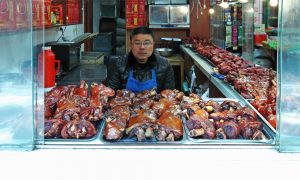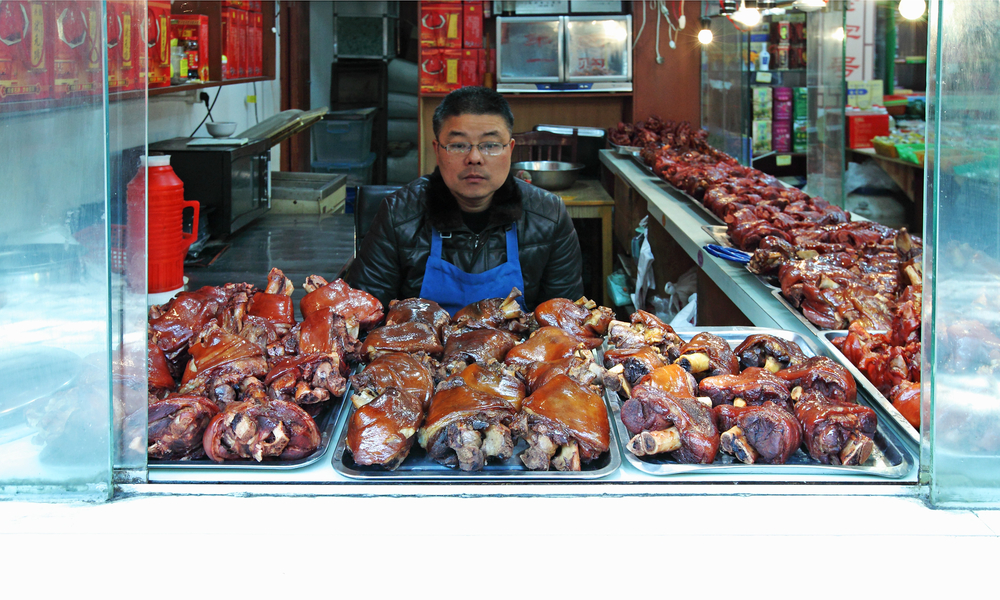By Fred Gale, USDA Economic Research Service
Abstract:
 China has become a leading importer of pork as its hog production costs have grown. China-U.S. comparisons show that hog producers in China face higher feed and labor costs than U.S. producers, while costs of feeder pigs fluctuate from year to year in both countries. Efficiency of feed use has improved marginally in China, but it remains below that of U.S. farms. Rapid wage growth is spurring China’s transition toward larger-scale farms, but labor productivity remains low in hog production. With rising production costs, constraints on land use, and stricter environmental regulations in China, the country is likely to remain a large importer of pork.
China has become a leading importer of pork as its hog production costs have grown. China-U.S. comparisons show that hog producers in China face higher feed and labor costs than U.S. producers, while costs of feeder pigs fluctuate from year to year in both countries. Efficiency of feed use has improved marginally in China, but it remains below that of U.S. farms. Rapid wage growth is spurring China’s transition toward larger-scale farms, but labor productivity remains low in hog production. With rising production costs, constraints on land use, and stricter environmental regulations in China, the country is likely to remain a large importer of pork.
Introduction:
China produces roughly half of the world’s pork, but it has nevertheless become a leading importer of the meat. China first emerged as a significant importer of pork during 2007-08 when a swine disease epidemic reduced domestic supply. Imports declined during 2009-10 when China banned pork from the United States—the main supplier at the time—over an alleged disease concern, but imports rebounded after the ban was lifted. From 2011 to 2015, China consistently imported large volumes of pork each year (fig. 1). Imports soared during 2016 as shrinking Chinese pork supplies helped push the country’s pork prices to record levels. China and Hong Kong together now constitute the world’s largest import market for pork. The United States was the leading supplier of China-Hong Kong pork imports during 2007-12, and the United States was the second-leading supplier after Germany during 2013-15.
Image credit: A Chinese butcher with the traditional stewed pork shank in the ancient town of Tongli, China. The town is placed under China National Key Cultural Relic Protection Unit.
Image ID:455076571
Copyright: Gwoeii
Editorial Credit: Gwoeii / Shutterstock.com










